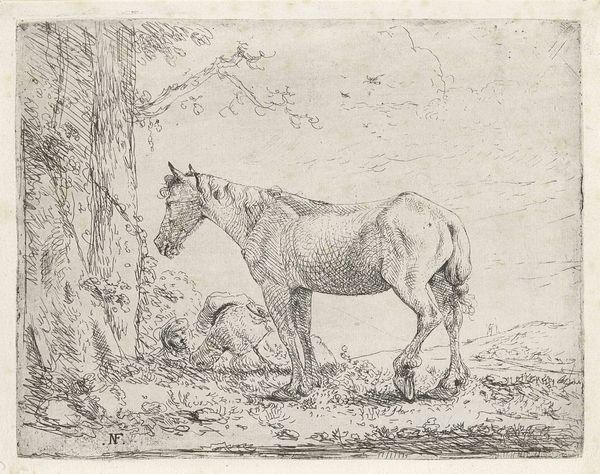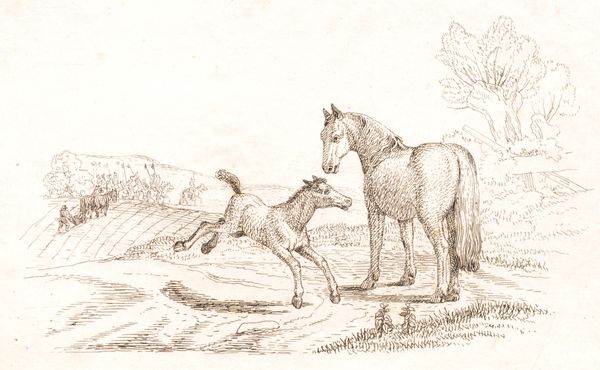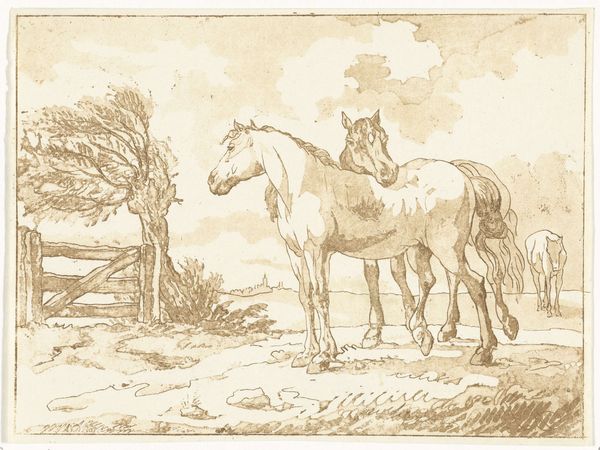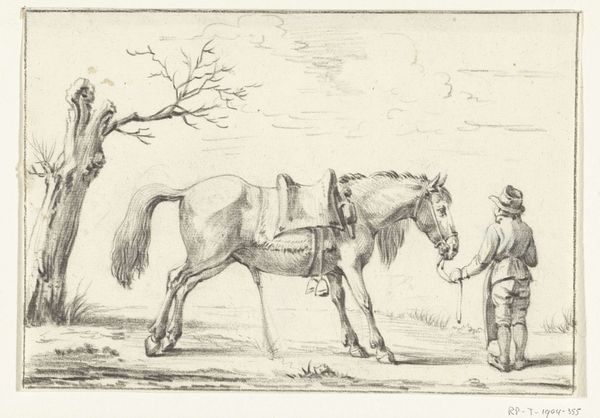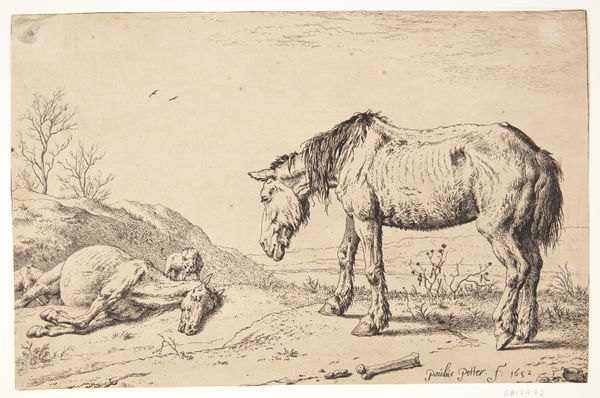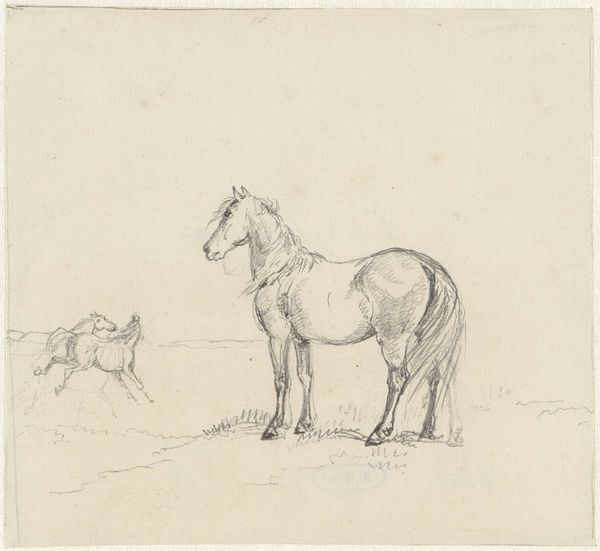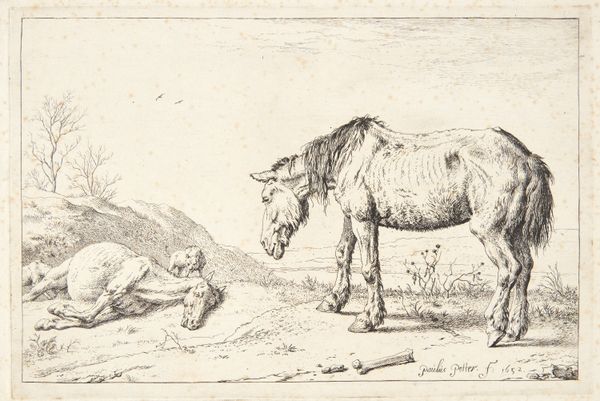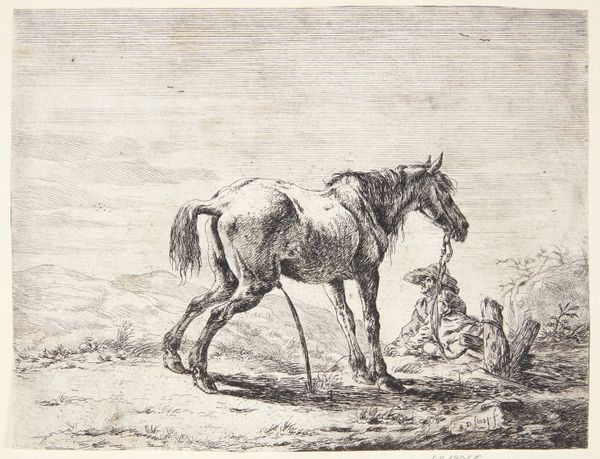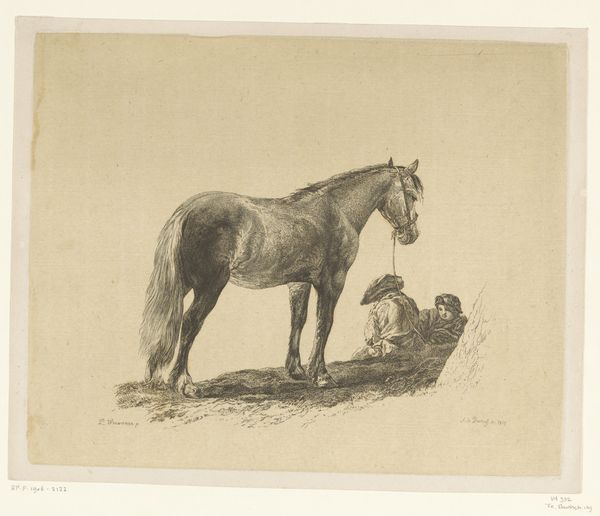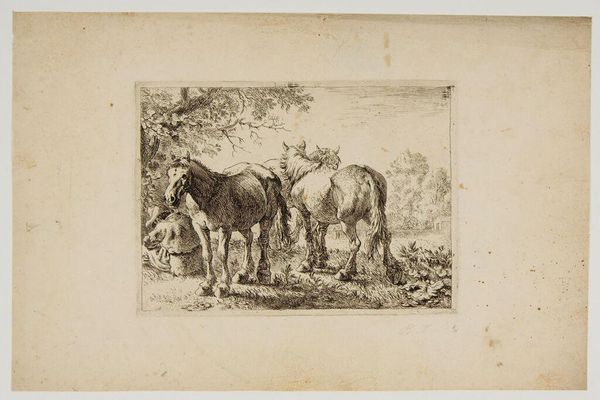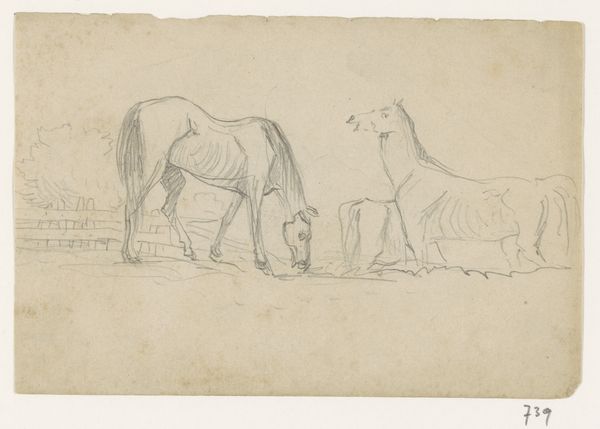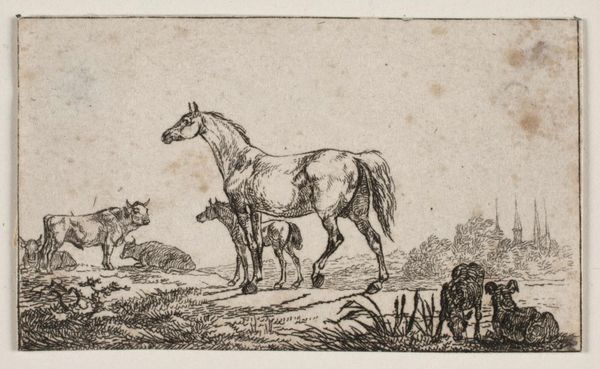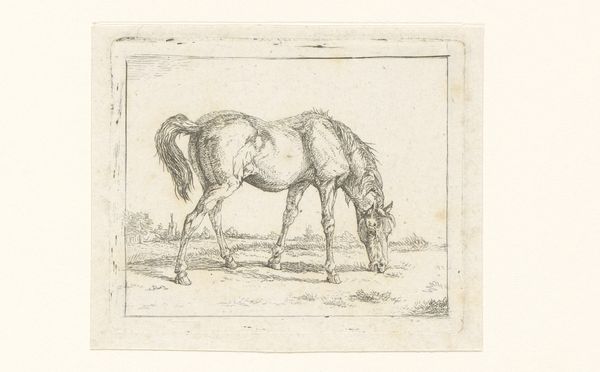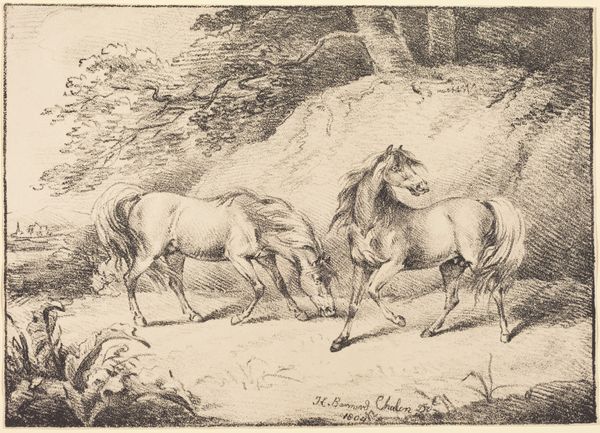
Illustration til "Halvhundrede Fabler for Børn" af Hey 1834
0:00
0:00
print, engraving
#
amateur sketch
#
light pencil work
# print
#
pen sketch
#
pencil sketch
#
incomplete sketchy
#
pencil drawing
#
pen-ink sketch
#
pencil work
#
engraving
#
fantasy sketch
#
initial sketch
Dimensions: 142 mm (height) x 259 mm (width) (bladmaal)
Editor: This is Martinus Rørbye’s "Illustration til \"Halvhundrede Fabler for Børn\" af Hey," created in 1834, using engraving. It features two horses, one appears to be a foal playfully kicking up its heels. It's such a simple scene, but the sketch-like quality gives it a sense of immediacy and energy. What do you see in this piece beyond the literal depiction? Curator: This unassuming illustration invites us to consider the relationship between representation and social context. Rørbye, working in a Denmark undergoing significant social and political changes, was contributing to a visual culture deeply intertwined with burgeoning nationalism. This image, initially, presents as an innocent portrayal of animal life. But consider the narratives embedded within. Editor: Narratives? How so? Curator: Well, we might ask: What fables were children being taught at this time? How did those stories reinforce or challenge existing power structures? This seemingly simple scene could reflect ideas about innocence, freedom, but also obedience, domesticity... Editor: So you're saying we can look at a drawing of horses and still see ideas about society? Curator: Absolutely. Visual culture doesn't exist in a vacuum. We can consider the position of childhood within 19th-century society. Also the position of animals, frequently used as allegory to talk about human social roles and morals. Where do you think gender might intersect with this reading? What about the ways class may be reinforced through depictions of nature and animal life? Editor: That gives me a lot to think about; I hadn't considered all those layers beneath the surface of something so apparently simple. It really highlights how even seemingly innocuous art can reflect broader cultural ideologies. Curator: Precisely. Art becomes a mirror, reflecting not just what the artist sees, but what society allows them – and us – to see.
Comments
No comments
Be the first to comment and join the conversation on the ultimate creative platform.
